“The glories that were Sunnyside are of another day,” to paraphrase the words of the song popularized by Tony Bennett. During a recent heat wave, I visited Sunnyside and it brought back boyhood memories of the enchanted playground beside the lake, with its carnival-like atmosphere, honky-tonk merry-go-round (carousel) music, roaring roller coaster named the Flyer, and wondrous aromas of the greasy food stands and freshly-popped popcorn.
Early morning on a hot day at Sunnyside in 2011. The pedestrian bridge across the Humber River is visible in the background.
Above is a postcard view of Sunnyside in the 1920s, looking west along Lakeshore Blvd, the red-domed roof of the merry-go-round prominent in the picture. Viewing the same location on Lakeshore Blvd today, the site of the Sunnyside merry-go-round is in the centre of the east-bound and west-bound traffic lanes of Lakeshore Blvd. The land is now the parking lot of the Palais Royal.
The Sunnyside Bathing Pavilion in the 1920s (left) and in 2011 (right)
Sunnyside (Gus Ryder) swimming pool in the 1920s (left) and in 2011 (right)
Sunnyside Beach, summer 2011, on a sweltering hot morning (left), and the Easter parade on the famous Sunnyside Boardwalk in the 1920s. The boardwalk of the 1920s is where the bicycle path is now located. Today’s boardwalk is closer to the water’s edge.
Sunnyside Beach in the 1920s.
The following information about the history of Sunnyside is from the novel “There Never Was a Better Time.” The story chronicles the adventures of an immigrant family as they discover the delights of Toronto in the 1920s, including the fascinating world of Sunnyside Beach.
The following quote tells more about the history of Sunnyside. It is from the book, “Arse Over Teakettle.”
In the 1930s and 1940s, Torontonians referred to Sunnyside as, “The Poor Man’s Riviera.” The Harbour Commission had constructed it with landfill, and it stretched along the shoreline from near the Humber River, eastward for almost a mile. It was thus accurate to say that they created Sunnyside by flinging dirt, the same way that many politicians build careers. The name Sunnyside was derived from Sunnyside Villa, which John G. Howard had constructed on the hill overlooking the lake. St. Joseph’s Hospital occupies the site today. John G. Howard donated the land that we now call High Park, and his house, Colborne Lodge, remains within the grounds.
The quote below is from the novel “Arse Over Teakettle – Book One – The Toronto Trilogy,” which relates the adventures of a boy growing up in 1940s Toronto. This section tells of his teenage memories of Sunnyside.
Today, the images of Sunnyside, from those early years, remain indelibly imprinted in my memory: popcorn, Kik Cola, gritty sandwiches, and the endless stretches of hot sand. However, I also have reminiscences from my teenage years.
The beach was adjacent to the famous twenty-foot-wide boardwalk. Beside it was a narrow strip of grass alongside Lakeshore Boulevard. Across the boulevard, on the opposite (north) side, were the amusement rides, among them the fabulous rollercoaster, The Sunnyside Flyer. Constructed of wood, it was said that near the end of the ride, referred to as the “home stretch,” the rollercoaster cars attained a speed of over sixty miles (96 km.) an hour. From the two highest points, the ensuing steep plunges could tear the bottom out of the cast-iron stomachs of those who dared to ride its rickety rails. By contrast, there was the merry-go-round, which
What a pity they eventually sold the Sunnyside merry-go-round to Disneyland, in California, where today it continues to delight children, and soothe the savage breast of elderly women. Other Sunnyside rides included the Bumper Cars, the Roll-O-Plane, and the Swooper. The names adequately revealed their gut-churning capabilities. The lakeside playground had other attractions, including miniature golf, canoeing, and swimming in either the Olympic-size pool or the “breast and ball-shrinking” waters of the icy lake. Other attractions were restaurants, a tea garden, dancing pavilions, and nightly entertainment at the bandstand.
The foods at the concession stands were the envy of the gastronomic world. The excellent vintages of Hire’s Root Beer, Vernor’s Ginger ale, and Honey Dew, rivalled the cellars of Dom Perignon. Red Hots (hot dogs), Downy Flake Donuts, and hamburgers “a la grease,” were beyond compare, and if properly ingested, could produce a stomach ache that was worthy of the Jolly Green Giant. Popcorn was fresh, buttery, and salty. Candyfloss was a cloud of sweetness. Taffy-apples could pull the molars from a mule, and a cone of chips (french fries) contained sufficient cider vinegar and salt to pickle cucumbers into dills or mummify a stomach. Sunnyside was the home of “comfort food.” However, when a person was young, cholesterol, high blood pressure, and girdles to reduce the waistline were so far in the future that they did not exist.
When the sun dipped beyond the horizon, the sparkling lights magically transformed Sunnyside into an enchanted land of dreams. People danced under the stars at the outdoor clubs, or swayed to the “big band” rhythms at the Palais Royale. Young bodies pressed against soft flesh as young couples rocked slowly to a romantic song. Lips gently touched as the final chord of the music signalled that the ballad was over.
Sunnyside was a place where older folks relived their memories, and the young created their own. Everyone should have a time and a place in their past that evoke tender remembrances of the romance of their youth. For many in 1940s Toronto, Sunnyside was the spot. What a pity it was demolished in the late 1950s to indulge the whims of the most worshipped god in Toronto, the Almighty Automobile.
The Palais Royale in 2011
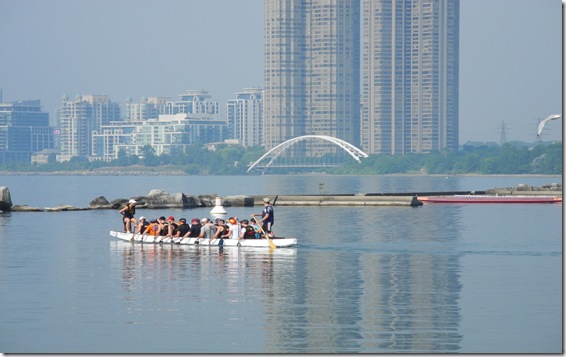
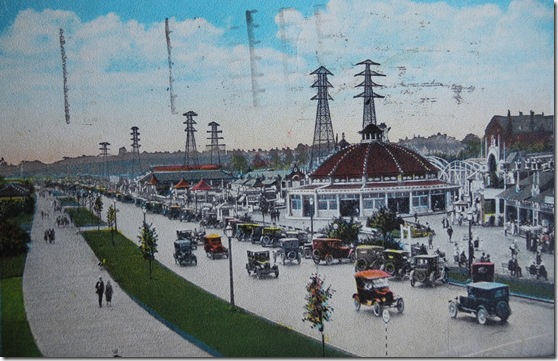
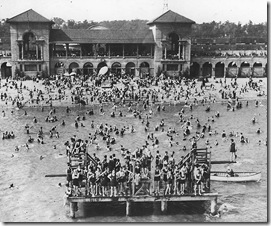
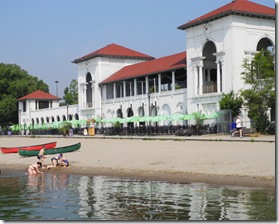
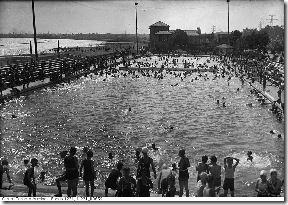
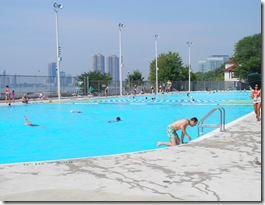
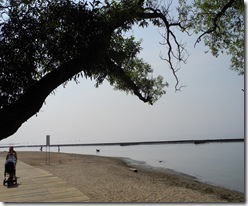
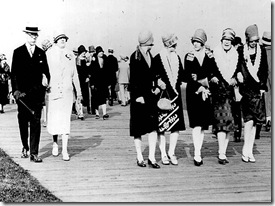
![f1257_s1057_it0091[1] f1257_s1057_it0091[1]](https://tayloronhistory.com/wp-content/uploads/2015/07/f1257_s1057_it00911_thumb.jpg)
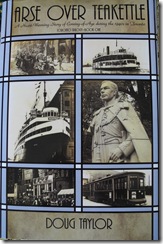
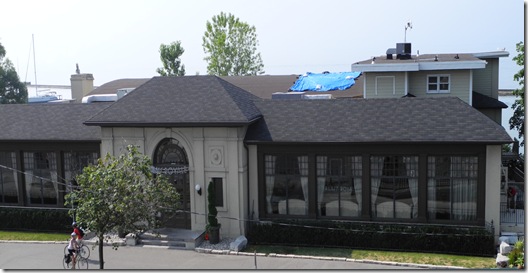


I seem to recall the Sunnyside Merry-go-round had a ring catcher and if you caught the gold ring you received a free ride. My brother worked there and his job was to retrieve the rings and give a free ride to the person that caught the gold ring.